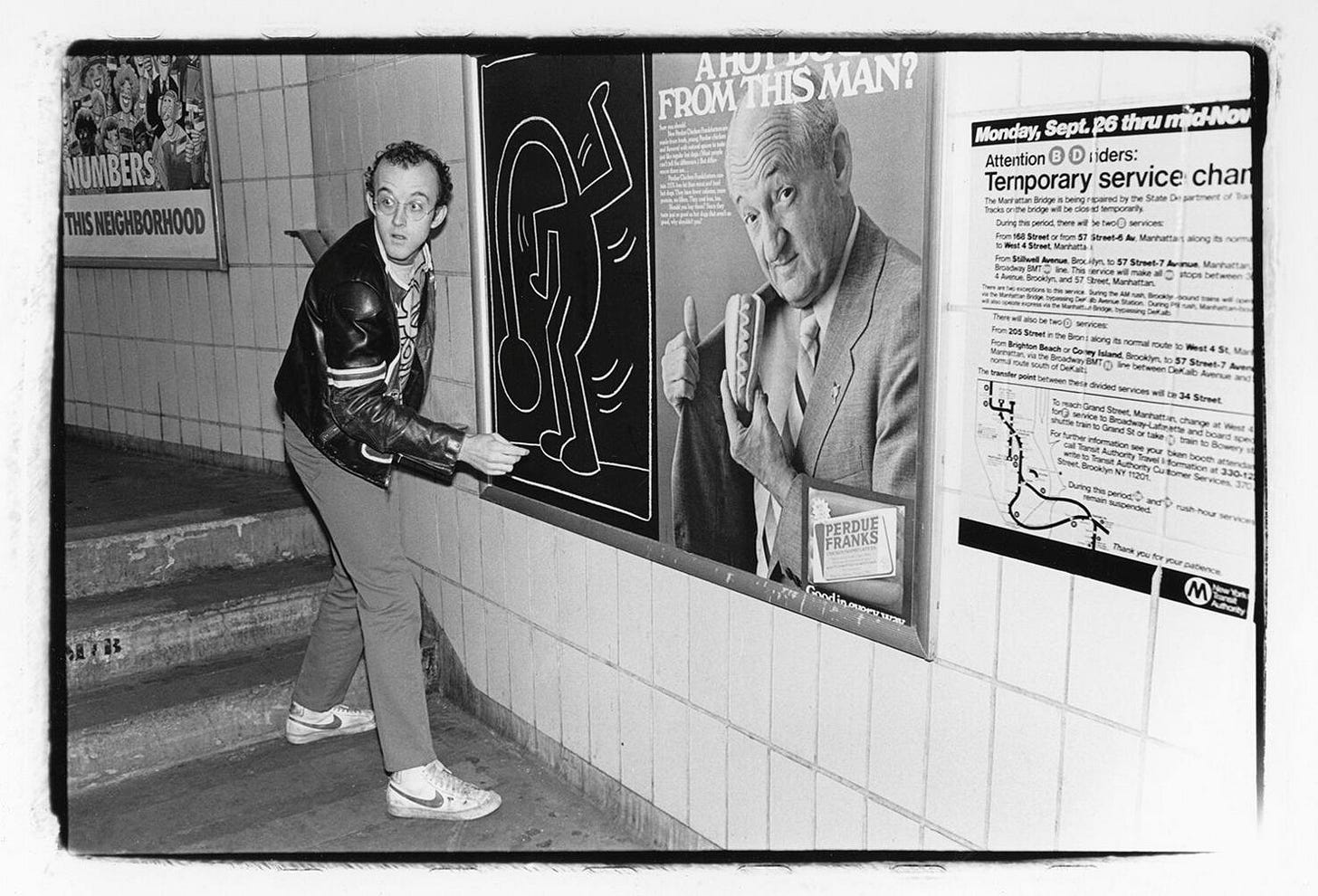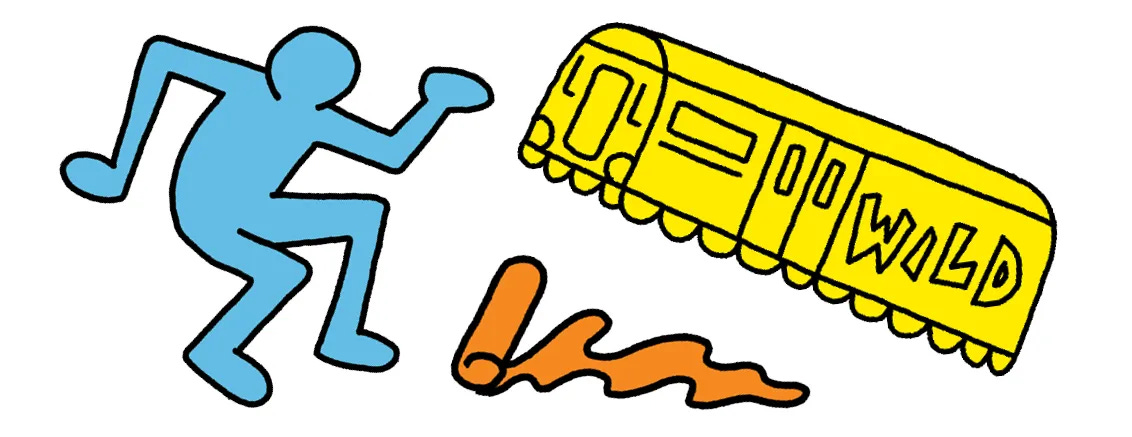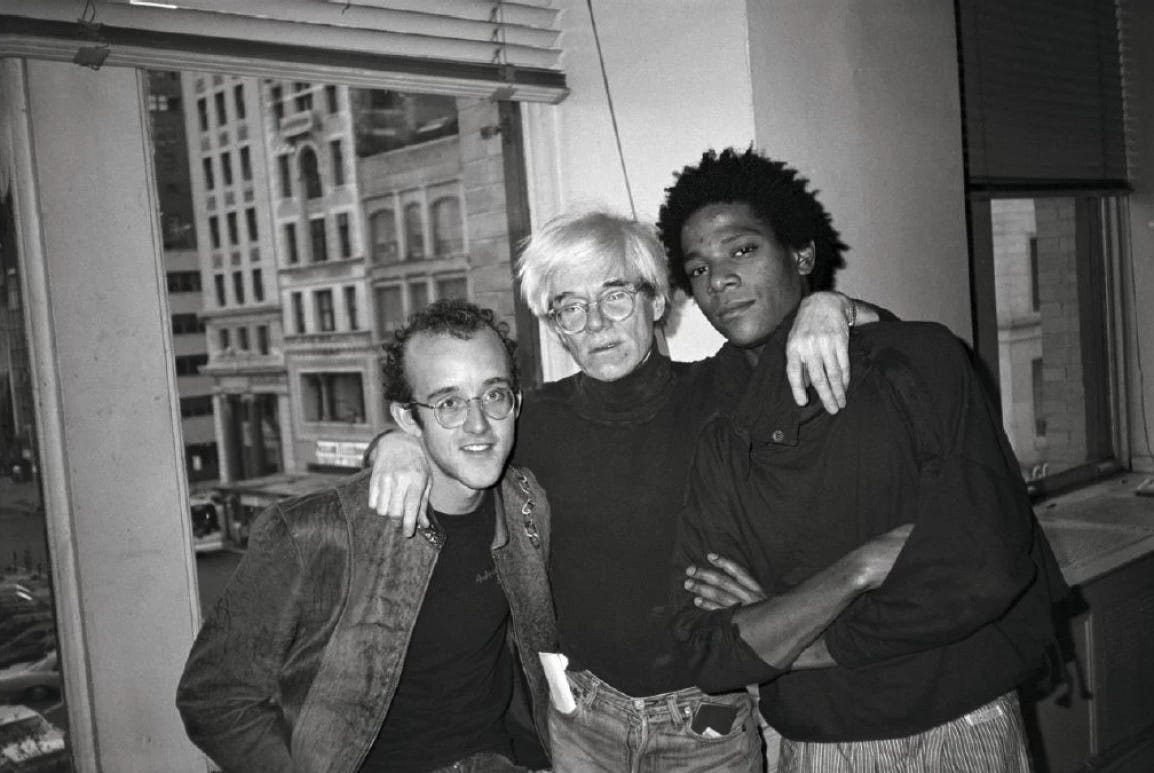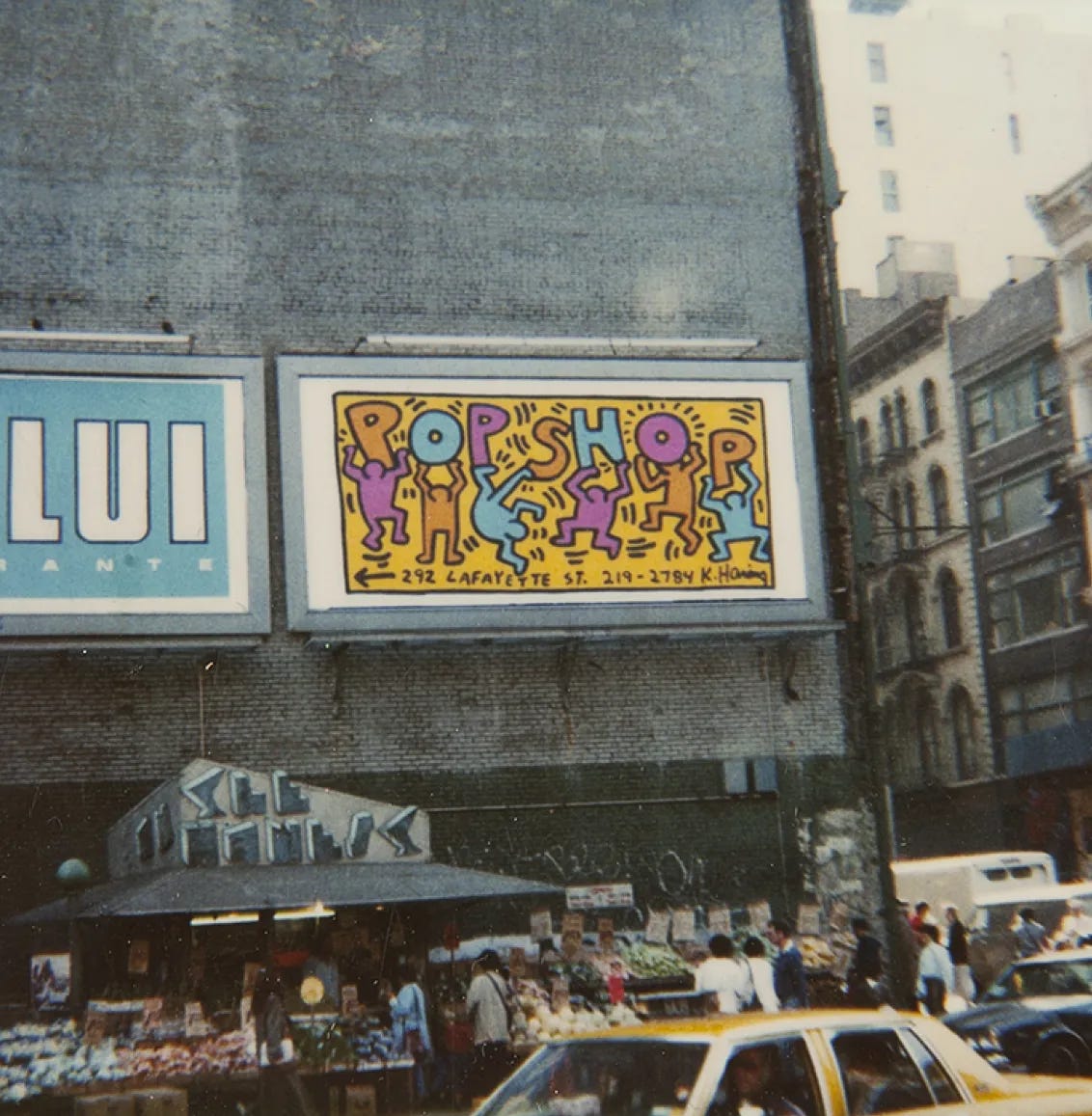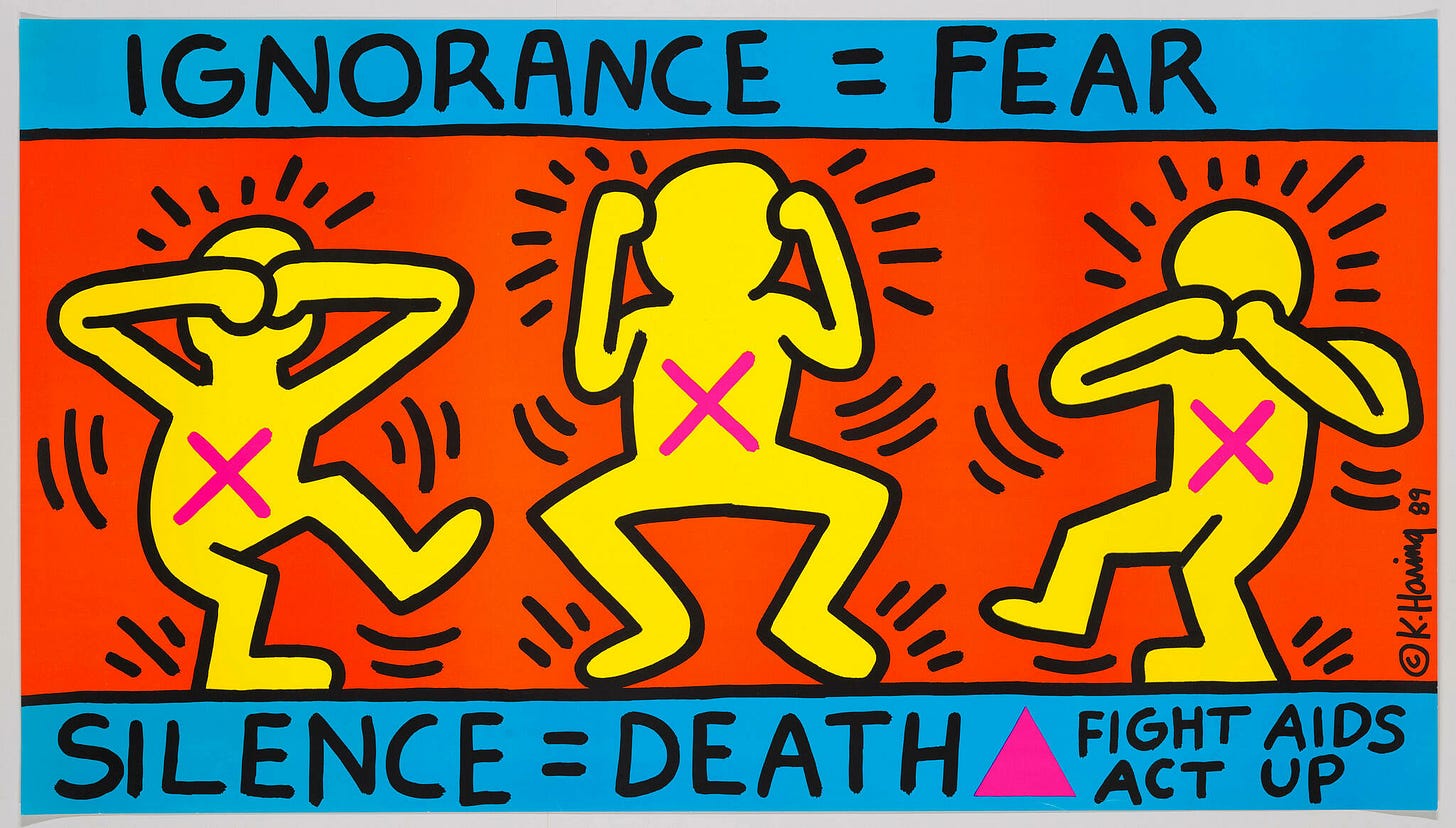#14. Speak Loudly & Speak Often
The man on the subway who made art accessible for everyone, fought for social justice and changed the landscape of art forever.
The work of Keith Haring changed the artistic landscape of New York throughout the 1980’s. This week, we wanted to pay homage to the man who began his career making chalk drawings on the New York Subways and went on to achieve international fame. Haring dedicated his life to art, creating work that was for everybody not just those who visited museums and galleries. Despite his all too brief life, Haring’s work still lives on today in many forms.
Keith Haring was born on 4th May 1958 in Reading, Pennsylvania. Haring had a huge passion for the arts from a very young age and was drawn to cartoons like Dr. Seuss and Disney. He understood early on the power that graphics and strong visuals had over an audience and there ability to create lasting impact.
Haring’s father, Allen Haring was an ammeter cartoonist and encouraged his son's ambition of one day working for Walt Disney. Haring knew that New York City was the place he needed to be to make his dream a reality, so in the late 1970’s Haring moved to New York and enrolled in the School of Visual Arts (SVA). It was here, that Haring’s lifelong dream of becoming an artist became a reality.
After graduating from the School of Visual Arts, Haring began using chalk. A medium not often used due to its easily erasable quality. For Haring however, this was highly effective for allowing him to make work anywhere and reach the wider audience he desired. Whilst travelling on the busy New York subways, Haring noticed unused advertising panels, covered with black photo paper. These were panels that covered campaigns before a new poster was installed. These acted as a blank canvas for Haring, allowing him space to create his trademark rapid line drawings.
Haring never sketched or planned his subway drawings. He would simply walk into the subway and just make art. His work quickly connected with the public, his style created powerful drawings and he developed a distinct style of fluid lines that allowed him to create his own visual language. Over the next five years between 1980-1985, Haring would create over 5,000 subway drawings. This seamless flow of images became familiar to New York commuters, who often would stop to engage with Haring when they encountered him at work. Throughout the 1980’s the subway became his “laboratory”, a way to have his art seen by the masses.
Haring touched on both human and political issues in his subway drawings, using slogans and visuals that appealed to everybody. The act of making the work, almost became performative as Haring started to become recognisable within New York as commuters would regularly watch him work. He was arrested many times for making his work on the subways, but for Haring this was all part of the artwork. Chalk was also very erasable which meant it was difficult for the police to ever prosecute him for vandalism or criminal damage.
‘Because they were so fragile people respected them, they didn’t try and mess them up, it was this chalk white thing in the middle of all this power, tension and violence that the subway was people were complete enthralled’.
Keith Haring for Rolling Stone Magazine, 1982
During this time Haring’s work began to achieve international recognition, as his art spoke to people and provided a voice to those who needed it the most. It was also during this time that Haring found his tribe, working among the likes of Jean Michel Basquiat and Kenny Scharf. This thriving alternative art community held shows outside the gallery and museum system, in the downtown streets, the subways and spaces in clubs and former dance halls, and just about anywhere where art could exist.
Haring relished the fame he received but used it to be of service to his community, he harnessed fame for the greater good. Activism was very quickly a huge part of his practice. Haring’s work regularly responded to social injustices as he became a big champion of children’s education, the anti-nuclear movement, and anti-police brutality. Throughout the 1980’s he also became a leading AIDS campaigner.
In 1986 on 292 Lafayette Street in the Soho neighborhood of Manhattan, New York Keith Haring opened his very first ‘Pop Shop’. He sold his work to the masses on t-shirts, mugs, posters, and sweatshirts. He wanted to reach everybody with his work. The store was the first of its kind and carried the legacy of Kieth for decades to come.
The 1980s were an extremely conservative time in Western politics with the rise of Thatcherism in the UK and the Reagan administration in the US. Word began to spread about a new, unknown disease we know today as AIDS. AIDS very quickly became associated with death, and there was very little known about the disease at the time, apart from that it was targeting young gay men. Prejudice to this disease was also rife. President Ronald Reagan made no mention of this horrifying disease until 1985, by which time it was a global epidemic. In 1987, at the height of his fame, Keith Haring himself was diagnosed HIV positive and contracted AIDS. At the time there was no known cure and this meant he was on limited time at the age of just 28. During this time, Haring traveled all over the world as political activism became the ultimate driving force behind his career.
Just a year before his tragic death, Haring produced ‘IGNORANCE=FEAR, 1989’, in response to government attitudes towards the disease. The poster consisted of three unisex figures all of which have a pink X on their chests, they are covering their ears, mouth and eyes. The pink X is a reference to the pink triangle that became widely used to raise awareness for AIDS during this time. This work in particular spoke to a whole generation of gay men who were ignored by society and too afraid to stand up and say something due to fear and shame. Haring’s work had the power to make people feel seen and change the way AIDS was viewed at this time. This work was plastered all over New York City at the time and forced the conversation surrounding AIDS when many people were ignorant of the disease. Haring was open about his HIV status and made no secret that he had AIDS, something controversial and incredibly brave given the prejudice surrounding the disease at the time.
Haring knew he was on borrowed time and made more work than ever from 1887-1989. The Keith Haring Foundation was set up by Haring once he was aware of his HIV status. He wanted to create a network and raise money for victims of AIDS. To this day, The Keith Haring Foundation has raised more the twenty million dollars to help support AIDS organisations across the globe. Even after his death Haring was still using his platform for the greater good.
In February 1990, Haring became seriously ill with the late stages of AIDS-related infections. He was receiving 24-hour care when his friend and manger Juan Dubose came to him with a letter from Disney directly. They wanted him to help to work on the Mickey Mouse Project. His work had by this time received international recognition. Haring didn’t believe this to be true and thought that Juan Dubose was lying to him stating how ‘you just want me to live’. Before Haring realised this was a genuine offer, it was too late. Keith Haring passed away on 16th February 1990. Since then The Keith Haring Foundation has worked with Walt Disney regularly, in many ways, Keith’s lifelong dream did eventually come true. Despite his all too soon passing, Keith’s Haring work is as present today as it has ever been. His work sits among some of the most iconic of all time. In just one decade Keith Haring was able to change the way we see the world.







